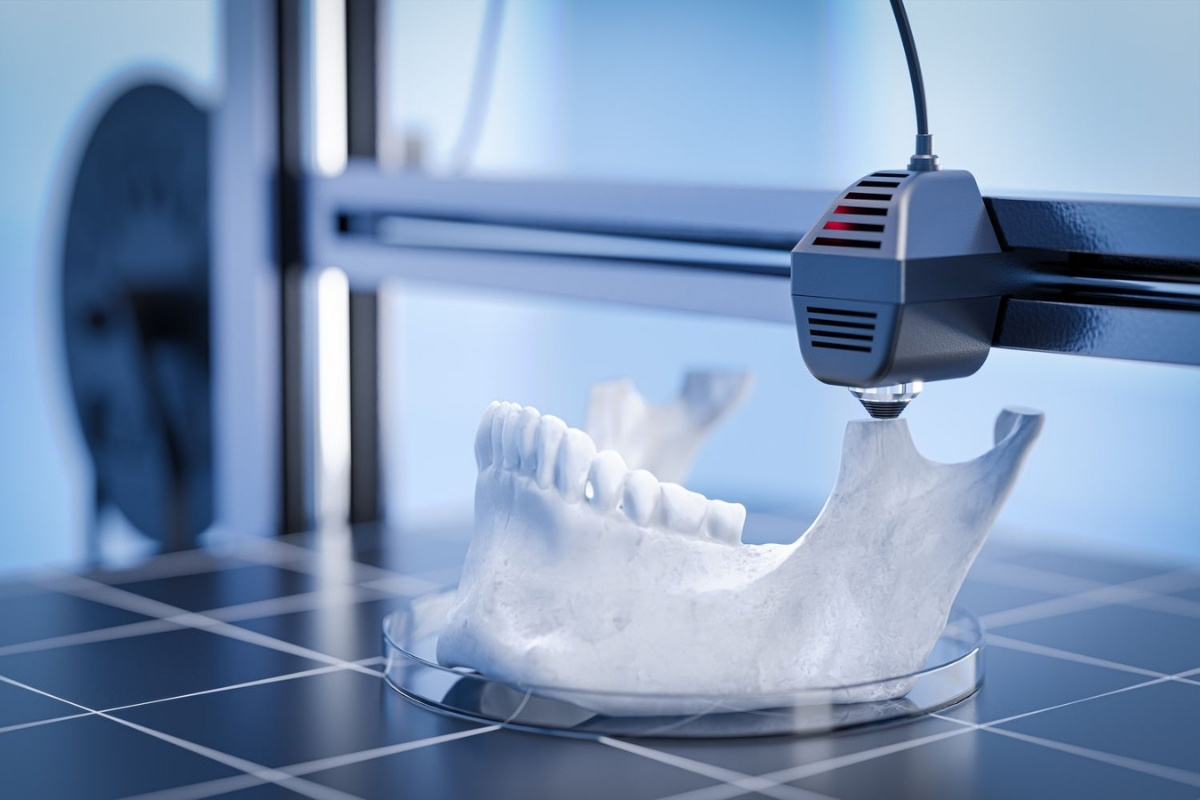
What is a 3D bioprinter? Imagine a printer that doesn't just print on paper but creates living tissues and organs. A 3D bioprinter does exactly that. Using bio-inks made from living cells, it builds structures layer by layer, much like a regular 3D printer. This technology holds promise for medical advancements, from creating skin grafts for burn victims to potentially printing entire organs for transplants. 3D bioprinting could revolutionize healthcare by reducing the need for organ donors and speeding up recovery times. Curious about how it works and its potential? Let's dive into 28 fascinating facts about this groundbreaking technology.
What is a 3D Bioprinter?
A 3D bioprinter is a machine that prints living cells, biomaterials, and other biological substances to create tissue-like structures. These structures can be used for medical research, drug testing, and potentially even organ transplants. Let's dive into some fascinating facts about this groundbreaking technology.
-
3D bioprinting involves layer-by-layer deposition of cells and biomaterials to create complex tissue structures.
-
Bio-inks are the materials used in 3D bioprinting. They can be made from living cells, hydrogels, and other biocompatible substances.
-
Hydrogels are often used as scaffolding materials in bioprinting. They provide a supportive environment for cells to grow and develop.
-
Stem cells are frequently used in bioprinting because they can differentiate into various cell types, making them versatile for creating different tissues.
-
Organovo is one of the pioneering companies in the field of 3D bioprinting. They focus on creating functional human tissues for medical research and therapeutic applications.
How Does 3D Bioprinting Work?
Understanding the mechanics behind 3D bioprinting can be quite intriguing. The process involves several steps, from designing the tissue structure to the actual printing and post-processing.
-
Computer-aided design (CAD) software is used to create a digital model of the tissue or organ to be printed.
-
Bioprinting typically involves three stages: pre-bioprinting, bioprinting, and post-bioprinting.
-
Pre-bioprinting includes creating the digital model and preparing the bio-inks.
-
Bioprinting is the actual printing process where the bio-inks are deposited layer by layer to form the tissue structure.
-
Post-bioprinting involves the maturation and stabilization of the printed tissue, often in a bioreactor.
Applications of 3D Bioprinting
The potential applications of 3D bioprinting are vast and varied, ranging from medical research to drug testing and even organ transplantation.
-
Drug testing can be more accurate with 3D bioprinted tissues, reducing the need for animal testing.
-
Personalized medicine could benefit from 3D bioprinting by creating patient-specific tissues for testing and treatment.
-
Regenerative medicine aims to use 3D bioprinting to create tissues and organs for transplantation.
-
Cancer research can utilize 3D bioprinted tumor models to study cancer behavior and test new treatments.
-
Cosmetic testing can be revolutionized by using bioprinted skin tissues, offering an ethical alternative to animal testing.
Challenges in 3D Bioprinting
Despite its promise, 3D bioprinting faces several challenges that need to be addressed for it to reach its full potential.
-
Cell viability is a major concern, as cells need to survive the printing process and remain functional.
-
Vascularization is crucial for creating larger tissues and organs, as it ensures that cells receive adequate nutrients and oxygen.
-
Scalability is another challenge, as creating larger tissues and organs requires more advanced technology and techniques.
-
Regulatory approval is necessary for clinical applications, and the regulatory landscape for 3D bioprinted products is still evolving.
-
Ethical considerations must be addressed, particularly when it comes to creating human tissues and organs.
Future of 3D Bioprinting
The future of 3D bioprinting holds immense promise, with ongoing research and development aimed at overcoming current limitations and expanding its applications.
-
Organ transplants could become more accessible with 3D bioprinted organs, potentially reducing the organ donor shortage.
-
Customized implants and prosthetics could be created using 3D bioprinting, offering better fit and functionality for patients.
-
Tissue engineering advancements could lead to the creation of more complex and functional tissues.
-
Bioprinted food is an emerging area of research, with the potential to create lab-grown meat and other food products.
-
Space exploration could benefit from 3D bioprinting by enabling the creation of tissues and organs in space for medical treatments.
Interesting Facts About 3D Bioprinting
Here are some additional interesting tidbits about 3D bioprinting that highlight its innovative nature and potential impact.
-
First bioprinted organ: In 2019, scientists successfully bioprinted a small, functional heart using human cells.
-
Bioprinted skin: Researchers have developed bioprinted skin that can be used for grafts and wound healing.
-
Bioprinted ears: Scientists have created bioprinted ears using a combination of living cells and synthetic materials, offering hope for reconstructive surgery.
The Future of 3D Bioprinting
3D bioprinting is changing healthcare. From creating customized organs to personalized medicine, this tech is a game-changer. Scientists are working on bioprinted tissues that could replace damaged ones, reducing the need for organ donors. Pharmaceutical companies are also using bioprinting to test drugs more efficiently, speeding up the process of getting new treatments to patients.
The potential for bioprinted skin to help burn victims and bioprinted bones to aid in complex fractures is immense. As research continues, the possibilities seem endless. This technology could lead to more affordable healthcare and better patient outcomes.
3D bioprinting is still in its early stages, but the progress so far is promising. Keep an eye on this field; it's set to revolutionize medicine in ways we can only begin to imagine.
Was this page helpful?
Our commitment to delivering trustworthy and engaging content is at the heart of what we do. Each fact on our site is contributed by real users like you, bringing a wealth of diverse insights and information. To ensure the highest standards of accuracy and reliability, our dedicated editors meticulously review each submission. This process guarantees that the facts we share are not only fascinating but also credible. Trust in our commitment to quality and authenticity as you explore and learn with us.
